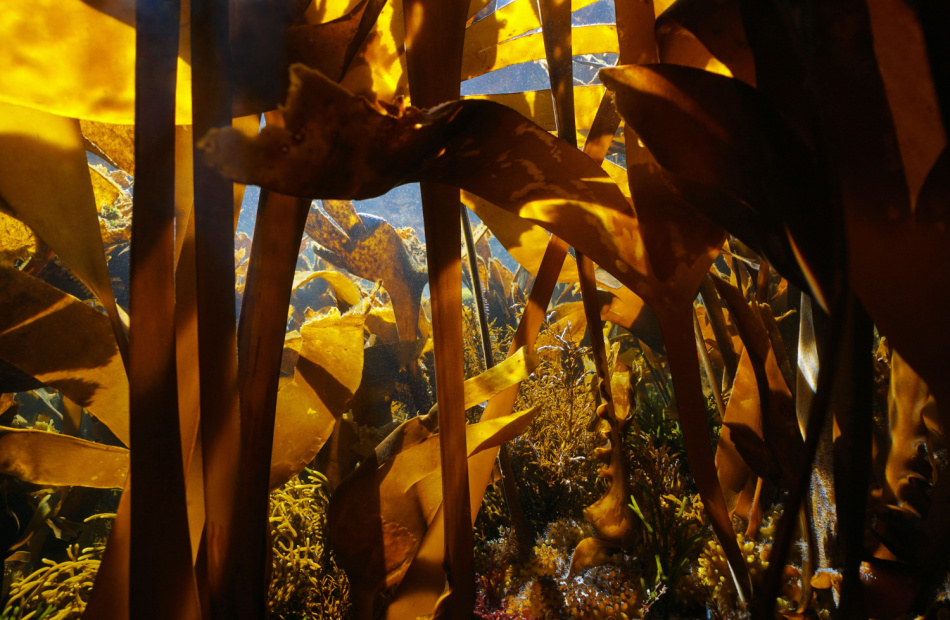The Nature Conservancy‘s marine biologist Frank Hurd spends his days amongst gigantic kelp curtains, studying underwater forests. One of his usual diving haunts is a kelp forest off Anacapa Island, one of the Channel Islands national park’s protected rocky volcanic islets off southern California.
This dense, robust kelp is a small fraction of underwater forests that cover practically every continent’s shoreline. The Great African Sea Forest, a magnificent length of enormous bamboo kelp stretching north from Cape Town to the Namibian shoreline (the backdrop for the film My Octopus Teacher), and the Great Southern Reef, hugging Australia’s southern coastline, are well-studied. However, several other undersea forests remain unknown.
Mysterious underwater forests
Since satellites can’t measure ocean depths, kelp, one of the fastest-growing plants, has proven hard to monitor. Seaweed forests are larger than previously thought, according to research published last September.
An international team of scientists from eight countries, led by Dr. Albert Pessarrodona from the University of Western Australia, manually scoured hundreds of studies, including local plant data records, online repositories, and citizen science initiatives, to model ocean forest distribution. They discovered that underwater forests occupy an area similar to the Amazon rainforest basin and twice the size of India.
A force to be reckoned with in the fight against climate change
Seaweed forests absorb carbon dioxide from saltwater and the atmosphere, which plays a big role in fighting the climate crisis. One analysis suggests ocean forests store as much carbon as the Amazon rainforest.
Because seaweed lacks a root system like mangroves and seagrass, its long-term carbon sequestration capabilities are currently unknown. How well seaweed stores carbon is still debated.
One of the study’s 10 authors, marine biologist Dr. Karen Filbee-Dexter, called the study a “major step forward” in understanding seaweed’s capacity to mitigate climate collapse “because it calculates the productivity – growth and carbon uptake – of the largest marine vegetated ecosystem”. She said that it can also measure the carbon-sink potential of maritime forests.
Kelp, the largest seaweed species, feeds and shelters fish, other marine animals, and birds.
The purple-hued weedy seadragon lives solely along Australia’s coastline among native kelp. Southern sea otters depend on Pacific kelp forests, and during its passage from Baja California, Mexico to Alaska, the powerful grey whale uses kelp forests as a refuge from killer whales and a feeding place for its young.
Due to their rapid development, underwater forests may help solve the global food crisis.
The scientists studied hundreds of seaweed growth studies from around the world, and their findings revealed that maritime forests are more productive than wheat, rice, and corn. It defined productivity as the amount of biomass generated by crops and seaweed (the fronds, stipes, and holdfasts of the seaweed).
Ocean forests in temperate places, such as Australia’s southern coast, produced two to 11 times more biomass per area than intensively farmed crops, a productivity that may be used to feed the world.
Western markets take on seaweed
More European and North American companies are making seaweed products for human consumption, following millennia of mass consumption in Asia. The Cornish Seaweed Company sells seaweed salad, Marks & Spencer sells “coconut seaweed crunch,” and many companies make kelp burgers.
“Although there is evidence of seaweed being consumed as food 14,500 years ago, it has not been a part of the diet for large swaths of the world’s population,” says marine researcher Amanda Swinimer, whose company Dakini Tidal Wilds has been wild harvesting seaweed for decades.
“People are looking for other sources of nutritious food” as food security worsens, she says. Seaweeds can be sustainable and nutrient-dense if harvested properly. Due to its nutritious benefits, seaweed is replacing corn and soya beans in animal feed.
Still, rising sea temperatures, pollution, and invasive species threaten undersea forests. Sea urchins, whose population has skyrocketed while starfish, their main predators, have died from a warming-water sickness, have devastated kelp along the northern California coast.
The Great Southern Reef off Australia and forests in the northwest Atlantic off Maine, Canada, and Greenland are also declining.
Seaweed forest study: a top priority
Compared to coral reefs, seaweed forests are rarely investigated, making their changes difficult to understand. Filbee-Dexter believes most seaweed forests are not even documented, let alone managed. Kelp grows in frigid seas on some of the world’s harshest coastlines, making it harder to examine than corals.
Filbee-Dexter believes that understanding these crucial but endangered marine ecosystems would help scientists protect them. “I hope that more awareness about these forests will lead to more protection and restoration.”
Hurd dives into California’s kelp forests, seeking to stop their demise. He thinks losing these rich ecosystems is disastrous for nature and humanity. He hopes drones, satellites, and AI will help researchers understand kelp’s involvement in climate change.
“The one thing that kelp in particular should never be underestimated for is the productivity and biodiversity it supports around the world. It should be protected and restored with a great sense of urgency.”












